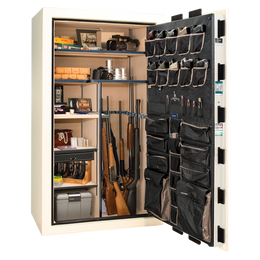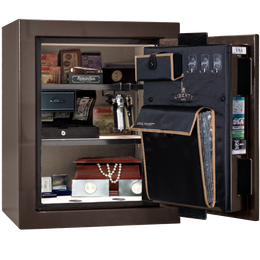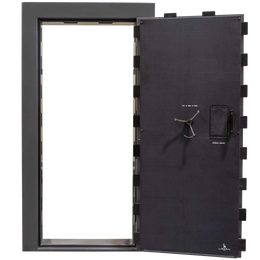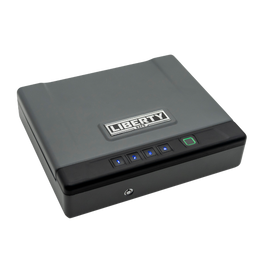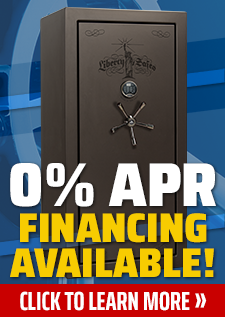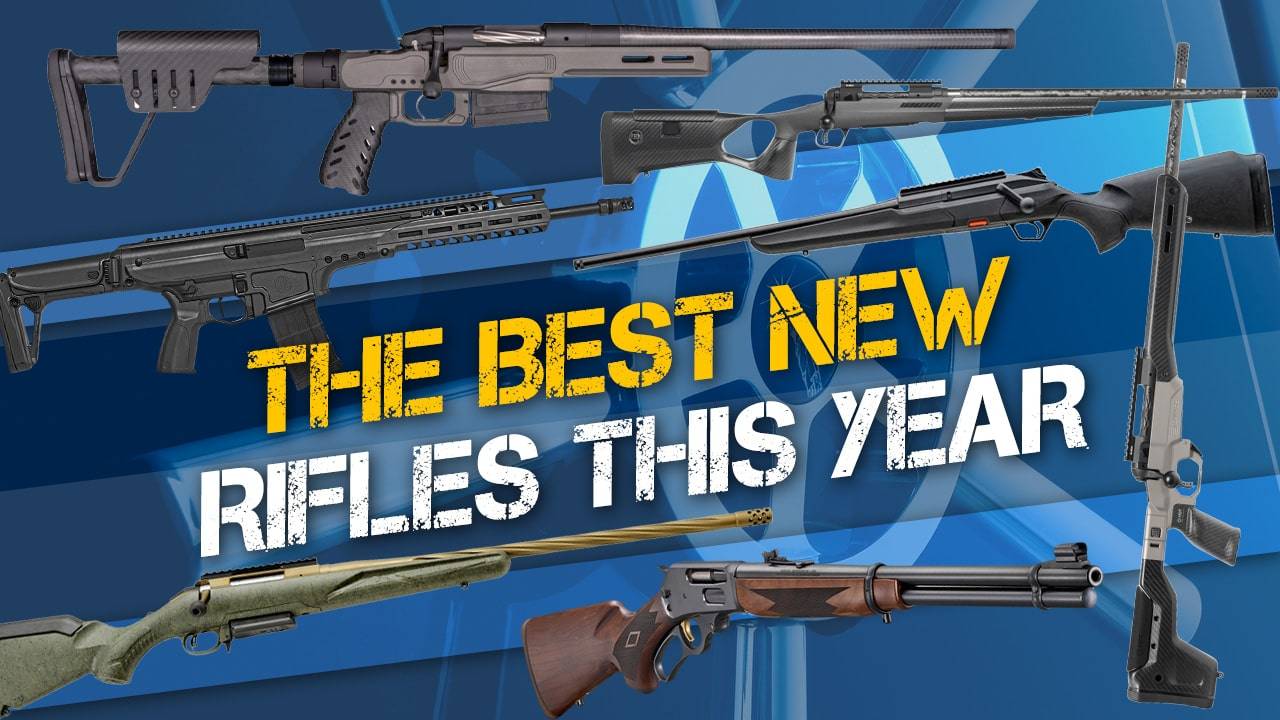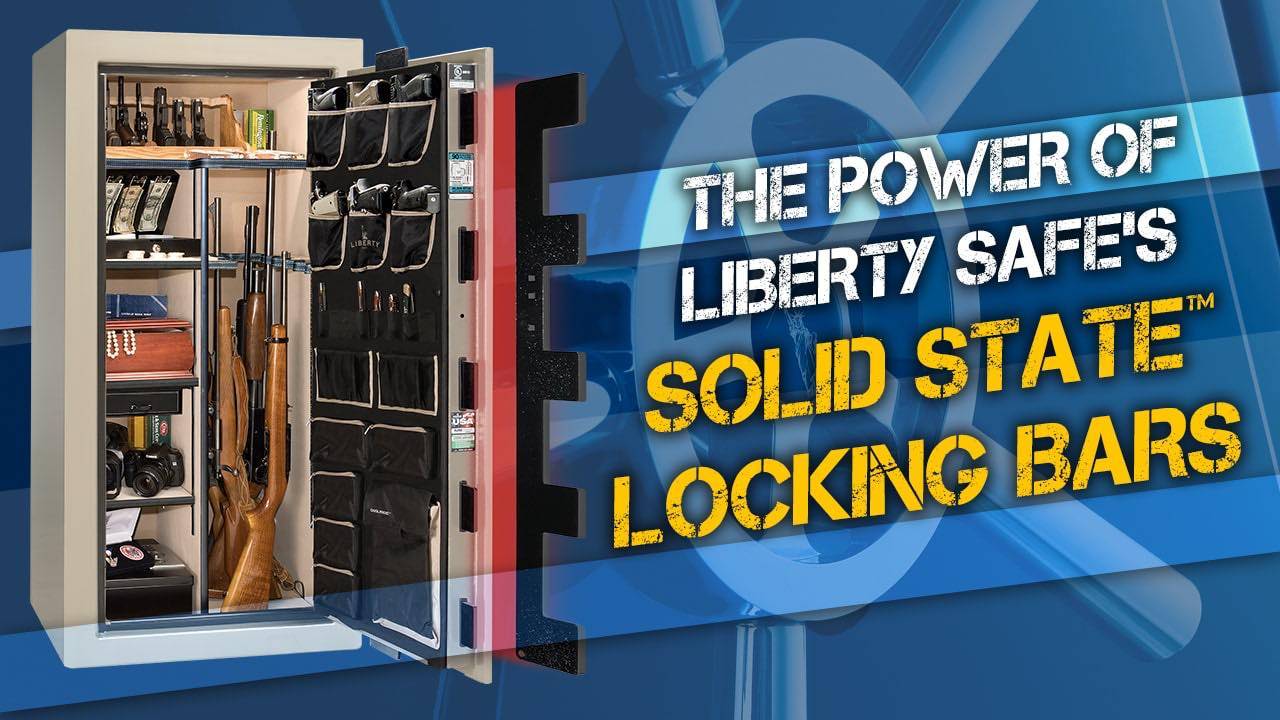Shotguns are undeniably the most versatile firearms in the world. They can be used for big game hunting, small game hunting, bird hunting, clay sports (like trap, skeet, and sporting clays), recreational shooting, law enforcement (including less lethal projectiles), military combat, and home defense. Part of the reason shotguns excel in so many differing roles is their ability to chamber and fire a wide range of different types of ammunition. But which is best for home defense?
As we elaborate in our Shotgun Ammo 101 article, ammunition choice is a key factor in overall effectiveness when it comes to the defensive use of a shotgun. There is a great variety of ammunition types, each with dramatically different intended uses and effects on a given target. Making the wrong choice could potentially be a life-or-death mistake. In this article, we will go over the three primary types of shotgun ammunition, discuss their pros and cons, and help you make an informed decision about what might be the best choice for you for home defense.
What is Buckshot, Birdshot, and Slugs?
Before discussing the pros and cons of each, we need to define what we’re talking about here. The term shotgun refers to a firearm intended to fire shot, or multiple lead pellets, from each cartridge, rather than a single bullet like a rifle or a handgun. This shot comes in varying sizes and materials, and the size of the shot gives our three types of shotgun ammunition their names. As the name implies, Buckshot was designed to kill medium game such as buck deer ethically, so its pellets are relatively large. Standard sizes vary from Number 4 buckshot at .24” diameter per pellet up to triple-aught or 000 buckshot, at .36” in diameter.
Image courtesty of Shooting Illustrated
Birdshot was designed to shoot, you guessed it, birds, such as quail, grouse, pheasant, ducks, and geese. Birdshot is much smaller than buckshot, with standard sizes ranging from the tiny Number 9 birdshot at .080” in diameter up through BBB shot at .19” in diameter. The most commonly available birdshot sizes in America, from largest to smallest, are 4, 5, 6, 7, 7 ½, and 8. Larger birdshot pellets are for larger birds and longer shots, as larger pellets retain more energy over a longer distance.
A shotgun slug cartridge is one way to make your shotgun perform more like a rifle, both in power and extended range. A slug round contains a single, large metal projectile, or slug, within a plastic hull instead of multiple round lead pellets like buckshot and birdshot rounds. Slugs are typically used for hunting large game (or self-defense), and they are very effective in that role. You should never shoot at an aerial target with a slug since the bullet travels in a trajectory similar to a rifle or handgun bullet and can remain lethal for hundreds of yards.
Which Buckshot Loads Are Best for Home Defense?
For decades, the gold standard for defensive buckshot loads has been 12-gauge 00 or double-aught (.33” diameter) lead buckshot in an 8 or 9-pellet 2 ¾” load. This is the most popular defensive load used by civilians, police, and military organizations. However, just because it’s popular doesn’t necessarily mean it’s the right choice for you, as we’ll see below.
The size of the buckshot pellet you choose can affect many aspects of defensive shotgun use, from the tightness of the pattern to barrier penetration to terminal ballistic effects on human-sized targets. However, it would probably be accurate to say that any commonly available size of buckshot load has the potential to be a good choice as a home defense cartridge, assuming it functions reliably and patterns well in your shotgun, and you can shoot it accurately.
At very close ranges, pretty much any 00 buckshot load will likely be sufficiently accurate and will certainly deliver a lot of energy to the intended target. However, there are other things to consider as ranges increase or the issue of innocent people in your home is factored in. It’s a common misconception that you don’t have to aim a shotgun. The fact is, you don’t want a lot of spread when you’re firing a shotgun at an attacker or home invader. You want all your pellets to hit the bad guy, not spread out and potentially harm innocent people. You absolutely must aim your home-defense shotgun, and the factors below all come into play if you want to make the best choice for you.
Buffered or non-buffered buckshot?
Buffered buckshot loads include a measure of (usually) polymer beads or filler in between the pellets. This buffering material serves two important purposes. First, it helps cushion the lead pellets from the enormous forces of acceleration as the round is fired, reducing the deformation of each pellet as they press against each other. Second, it cushions the pellets as they travel through the choke of the barrel (if present), further reducing shot pellet deformation and improving patterning.
Plated or non-plated buckshot?
Premium buckshot is often plated with copper or nickel. This has two main purposes, in addition to reducing lead oxidation. First, the coating helps harden the surface of the pellet, preventing deformation due to the forces of acceleration when the shot is fired, or when passing through a restrictive choke. Secondly, plated pellets can perform differently than raw led pellets, can fly straighter, and can penetrate more deeply in some circumstances. If these attributes are desirable, selecting a plated buckshot load may be worth the extra cost.
Magnum, standard, or reduced recoil?
Manly men who shoot manly guns often recommend the most powerful load available for every use. After all, why just destroy something when you can blast it into its component molecules? However, this attitude is usually not helpful, and when talking about the defensive use of a shotgun against human threats, there is a point of diminishing returns. Ballistic testing and real-world shooting studies show that human threats are sufficiently and adequately dealt with when using quality, reduced-recoil buckshot loads. Police agencies often select reduced-recoil loads because 8 or 9 pellets of 00 buckshot moving at around 1,100-1,200 feet per second have been shown to be just as effective as 8 or 9 pellets of 00 buckshot moving at around 1,400-1,500 feet per second, when fired at human threats.
Another issue to consider is recoil. Full-power buckshot loads, even in standard 2 ¾” lengths, can deliver punishing recoil to the shooter. This effect is worsened with ill-fitting shotguns, buttstocks without recoil pads, and smaller-statured shooters. Shooting a pump-action shotgun firing a 3” or 3.5” magnum round is among the most painful firearm experiences, including some elephant rifles. This is simply not necessary for a home defense scenario. Lighter-recoiling loads reduce the punishment to the shooter, encourage regular practice, and still deliver more than lethal energy and damage to a human attacker.
Video: Low Recoil Buckshot
Additionally, magnum buckshot loads, whether 2 ¾”, 3”, or 3 ½” in length, can increase the risk of overpenetration. This term refers to bullets or projectiles passing completely through a target and retaining enough energy to hurt or kill an innocent person on the other side. Magnum or even full-power standard buckshot loads can over-penetrate a human attacker, while reduced-recoil loads have been shown to reduce that risk while still delivering devastating damage to the threat itself.
FLITECONTROL® or Standard Wad?
Federal’s FLITECONTROL® wad revolutionized defensive (and hunting) buckshot loads when it was introduced in 2005. Prior to the FliteControl technology, keeping all nine pellets of a standard 00 buckshot load on a human torso-sized target was difficult after about 15 yards when fired from common self-defense shotguns. With the FliteControl wad, you may reliably keep all the pellets of a 00-buck load on a torso target out to 35 or 40 yards, depending on your shotgun and choke.
The FLITECONTROL® wad also has benefits at closer distances, reducing a basketball-sized pattern to a golf-ball-sized pattern in many cases. This allows much more accurate shooting and reduces the risk of harm to innocents due to a stray pellet.
Video: Patterning 00 Buckshot - Federal FLITECONTROL® vs Standard Wad
The Issue of Overpenetration and Buckshot Size
As mentioned above, overpenetration refers to a defensive firearm projectile passing through or missing an attacker, retaining lethal energy and threatening innocent bystanders in your home (or even your neighbors). For this reason, choosing a buckshot load and shotgun that will accurately and consistently place all of the pellets into your intended target at the distances inside your home is essential. There have been recorded instances of stray buckshot pellets injuring or killing innocent people. You don’t want that.
The best way to know how a particular buckshot load will perform in your home defense shotgun is to test it out. Measure the farthest potential shot you envision needing to take inside your home, take some sheets of paper to the range, along with your chosen ammunition, and see how far your shot pellets spread at that distance. You may be surprised to learn that some ammunition produces a dangerously large pattern at in-home distances.
People who use guns for a living generally have individual preferences based on study and experience. While some defensive shotgun experts opine that #3 or #4 buck is the best overall choice, others feel that #1 buck is superior to all other choices, even over 00 buck for tactical/defensive use, since there is more total payload, sufficient penetration in ordnance gelatin, less risk of over-penetration, and a greater total combined cross-sectional area.
A larger buckshot generally penetrates more interior walls than a smaller buckshot, like #4. If your primary concern is to avoid overpenetration, a #4 or #3 buckshot load will likely be a better choice than 00 or 000 buckshot. It can be difficult to find a quality #3 or #4 buck load from many ammunition manufacturers. For this reason, many people select the more common 00 buckshot size and its caveats and practice to understand how far they can accurately place all pellets within a desired target.
The best overall home defense buckshot load: Federal 8 pellet FLITECONTROL 00 buck
Federal FLITECONTROL buckshot, specifically the 8-pellet Tactical or Low-recoil variety, has produced astoundingly tight patterns out of our defensive shotguns, even out to 35 or 40 yards. This is realistically the limit of most home defense scenarios, particularly for urban or suburban residents. We suggest a rifle if you foresee needing to reach out further than that.
Federal’s FliteControl 00 buckshot loads feature copper-plated pellets and include buffering material, and these pellets have performed well in ballistic gel testing. The bad news is Federal may be discontinuing the 8-pellet FliteControl load in favor of the more common 9-pellet load. We have had good results with both, so either should be good to go, but the 8-pellet produced tighter patterns. Additionally, the 00-sized Federal buckshot loads are much more readily available than their #1 buckshot FliteControl load, which has been in and out of production for over a decade. If you can find #1 buckshot FliteControl loads, buy them while you can, as they’re excellent.
However, if overpenetration is not a concern, and you want more for the sake of more, look at Hornady’s Black line of 00 defensive buckshot (effectively identical to their Critical Defense load, also).
Hornady Black uses the same type of flight-control wad as the Federal load (Hornady calls it the VersaTite wad), but Hornady uses plain, unbuffered pellets and doesn’t skimp on the powder. This load leaves the muzzle of a typical 18”-barreled defensive shotgun at around 1,600 feet per second.
For perspective, an average load of 8 pellet 00 buckshot weighs 437 gains. So, moving at around 1,145 fps, Federal’s FliteControl produces about 1,270 foot-pounds of muzzle energy. That’s a lot. However, Hornady Black’s eight pellet 00 buck load leaves the muzzle at 1,600 fps, producing a whopping 2,483 foot-pounds of energy. This can help if light barrier penetration is desirable or if longer shots are likely. However, this increase in muzzle velocity comes at the price of greatly increased recoil to the shooter, so take that into account.
Are Shotgun Slugs Good for Home Defense?
In short, yes, if significant penetration through multiple house walls is not a concern, and you can handle the heavy recoil. A shotgun slug has been shown in actual shootings to be a very effective manstopper. Another advantage of using slugs is that they can be very accurate out to 50 yards or more, whereas buckshot or birdshot produces a pattern that spreads wider the farther the shot travels. A good shooter with the right shotgun can keep three slug rounds on a paper plate target at 100 yards. In a home-defense scenario, the necessity to fire at a threat from that far away is extremely unlikely, but if you live in a very rural area and are faced with multiple attackers at extended ranges, this might be a consideration for you. However, in this case, it’s probably better to go with a good rifle like an AR-15.
Disadvantages of shotgun slugs for home defense
It’s important to note that, like all shotguns intended for defensive use, a shotgun loaded with slugs must be aimed, not merely pointed. A slug is typically a full ounce of lead, and this projectile can easily pass through multiple sheets of drywall, along with exterior walls, and still retain lethal energy on the other side. Unlike birdshot or smaller buckshot, a slug has more potential for dangerous overpenetration, particularly if you miss your target.
Also, note that slugs typically hit higher than you might expect than your shotgun patterns with birdshot. So (again), it’s important to pattern your specific shotgun with your selected loads so you know exactly where your shots will hit. Contrary to what we see in the movies, if you don’t aim your shotgun, it’s easy to miss, even up close.
Video: Shotgun Slugs for Home Defense
Another disadvantage of slugs for home defense is that they typically produce heavy recoil and muzzle blast. Many new or inexperienced shooters find that shooting a 12-gauge shotgun loaded with slugs is truly painful, and this can lead to bad habits like flinching, to say nothing of potential injury to the shooter. There are reduced-recoil slug loads available, but they are rare and may be impossible to find in any meaningful quantity, particularly during times of shortage. Even reduced-recoil slug cartridges still produce quite a bit of recoil.
Finally, shotgun slug rounds are typically costly. It’s common these days to pay well over a dollar a shot, even when buying ammo online, and prices can be much higher than that. This doesn’t allow for much inexpensive practice so that you can become proficient with your home-defense shotgun load.
Are Birdshot Loads Good for Home Defense?
This is a very divisive topic, with passionate arguments on both sides. However, most experts will advise you not to use birdshot but instead use buckshot or slug rounds for defensive purposes. Birdshot is designed for birds, which have much less dense bone structure and less muscle mass than human threats. They also don’t wear heavy clothing. In nearly every case, informed defensive instructors will advise students to use buckshot or slugs instead.
However, there are some situations where using birdshot might be an appropriate choice. Let’s review some of the pros and cons of birdshot for home defense.
Advantages of birdshot for home defense
There are some cases in which larger birdshot might be the right choice for you, such as when living near other homes or apartments and where penetration of any stray pellets through multiple walls is the primary concern. Birdshot has much less mass per pellet than buckshot or slugs and have been shown to penetrate far less through drywall, sheet metal, and exterior building materials.
This means that if you miss with your shot, or some of the pellets pass through or hit wide of the target, there’s a much lower chance that these stray pellets will penetrate through multiple walls and potentially harm or kill an innocent person.
Another reason you might select birdshot for home defense is that it is what you have or can afford. Birdshot is usually much less expensive than buckshot or slug rounds. Standard birdshot loads are also relatively low-recoil compared to full-power buckshot or slugs, which can be an important factor for some people. If you’re afraid to pull the trigger due to the intense kick of a powerful shotgun round, that’s not what you want to worry about. Small-statured shooters, older adults, or others who may be bruised or hurt by powerful recoil might select lighter birdshot rounds as a viable home defense option. It’s certainly better than nothing.
There is some video evidence of realistic ballistic testing of birdshot on human-tissue-like targets. Paul Harrel’s video testing birdshot for home defense showed that heavy loads of birdshot were somewhat effective in penetrating fat and muscle, and didn’t over-penetrate interior walls. Note that the target selected is not a human analog, however.
Video: Bird Shot in your Home Defense Shotgun
Disadvantages of birdshot for home defense
Birdshot may cause impressive-looking damage to external muscle tissue, but depending on the target, the distance, the choke selected, and the ammunition, smaller birdshot pellets may not have sufficient mass to penetrate the vital organs and reliably and quickly stop a threat. In actual shootings, determined assailants shot with birdshot usually aren’t immediately incapacitated, and there have been several cases where bad guys killed their shooters before the birdshot took effect. Many have survived being shot with birdshot, even at relatively close range. (Remember the famous incident with Dick Cheney?)
One study on 12-gauge shotgun effectiveness in actual shootings found that:
- Birdshot (all types): 17% of shots led to an immediate incapacitation
- Buckshot (all types): 54% of shots led to an immediate incapacitation
- Slugs: 67% of shots led to an immediate incapacitation
If we were forced to choose a birdshot load for home defense, we’d choose the heaviest load available for our shotgun’s chambering: a 2 ¾” high brass or 3” magnum load of larger birdshot, probably number 4 or larger. (Remember, as the number of shot get higher, the pellet size gets smaller.) Number 2 birdshot or BB would be better. As you increase shot pellet size, however, you also increase the chances of overpenetration through walls; if that is a primary concern, consider that in your decision.
Video: BEST Home Defense Shotgun Ammo
(BIRDSHOT vs. BUCKSHOT vs. SLUG)
Safeguard Your Choice of Shotgun and Load with Liberty’s Secure Solutions
Liberty Safe is America’s #1 manufacturer of home and gun safes, and all our safes are made in America from American steel. If you decide a shotgun is the right choice for your home-defense firearm, keep it safe and protected in a quality gun safe from Liberty. Click here to find a dealer near you!
*Made in the U.S.A. from U.S. and Global Parts.


